Why Does Facetime Keep Hanging Up: 10 Easy Fixes
FaceTime, Apple’s popular video and audio calling service, has transformed how people connect and communicate across distances. However, users may encounter frustrating instances where FaceTime calls unexpectedly hang up, disrupting conversations and causing inconvenience.

Understanding the underlying reasons behind FaceTime call disruptions is crucial for troubleshooting and resolving these issues effectively. In this guide, we explore the common factors contributing to FaceTime calls hanging up and provide effective solutions to help users maintain seamless connections during FaceTime conversations.
Here are several reasons why FaceTime may keep hanging up:
- Poor Network Connection: Unstable or weak Wi-Fi or cellular connections can lead to FaceTime calls dropping.
- Device Overheating: Excessive heat can cause your device to perform poorly, leading to FaceTime interruptions.
- Software Glitches: Bugs or software issues within the FaceTime app or your device’s operating system can result in call disruptions.
- Airplane Mode Enabled: Forgetting to disable Airplane Mode can prevent your device from establishing a proper connection for FaceTime calls.
- Outdated iOS Version: Running an outdated version of iOS may cause compatibility issues with FaceTime or result in known bugs that affect its performance.
- VPN Interference: Virtual Private Network (VPN) connections can sometimes interfere with FaceTime functionality, causing calls to drop unexpectedly.
- Incorrect Date & Time Settings: Inaccurate date and time settings on your device can lead to synchronization issues, affecting FaceTime’s ability to maintain calls.
- Incompatibility with Group FaceTime: Some older iPhone models may not support Group FaceTime calls, leading to disruptions when attempting to join or initiate group calls.
- Network Configuration Issues: Problems with your network configuration, such as blocked ports or firewall settings, can disrupt FaceTime calls.
- Hardware Malfunction: In rare cases, hardware issues with your device’s camera, microphone, or other components may lead to FaceTime call interruptions.
When your FaceTime calls hang up unexpectedly, you should consider implementing the following troubleshooting methods.
1. Check Your Network Connection
One of the primary reasons FaceTime calls may hang up unexpectedly is due to a shaky network connection. Whether you’re using Wi-Fi or cellular data, a weak or unstable connection can cause interruptions during your calls. Before starting a FaceTime conversation, ensure you’re connected to a reliable network with strong signal strength.
If you’re using Wi-Fi, make sure you’re within range of the router and that there are no obstructions interfering with the signal. Additionally, consider restarting your router or modem to refresh the connection.

If you’re using cellular data, check your signal strength and consider moving to an area with better reception if possible. It’s also worth monitoring your data usage to ensure you have sufficient bandwidth for FaceTime calls, especially if you’re on a limited data plan.
2. Check if Your Device Has Overheated
Overheating of your device is another factor that can contribute to FaceTime calls hanging up. When your device becomes too hot, it can struggle to maintain optimal performance, leading to potential disruptions during FaceTime calls.
Pay attention to its temperature while using FaceTime to check if your device is overheating. If your device feels excessively hot to the touch, move to a cooler environment and avoid direct sunlight or other heat sources. Remove any protective cases or covers trapping heat around your device if possible.
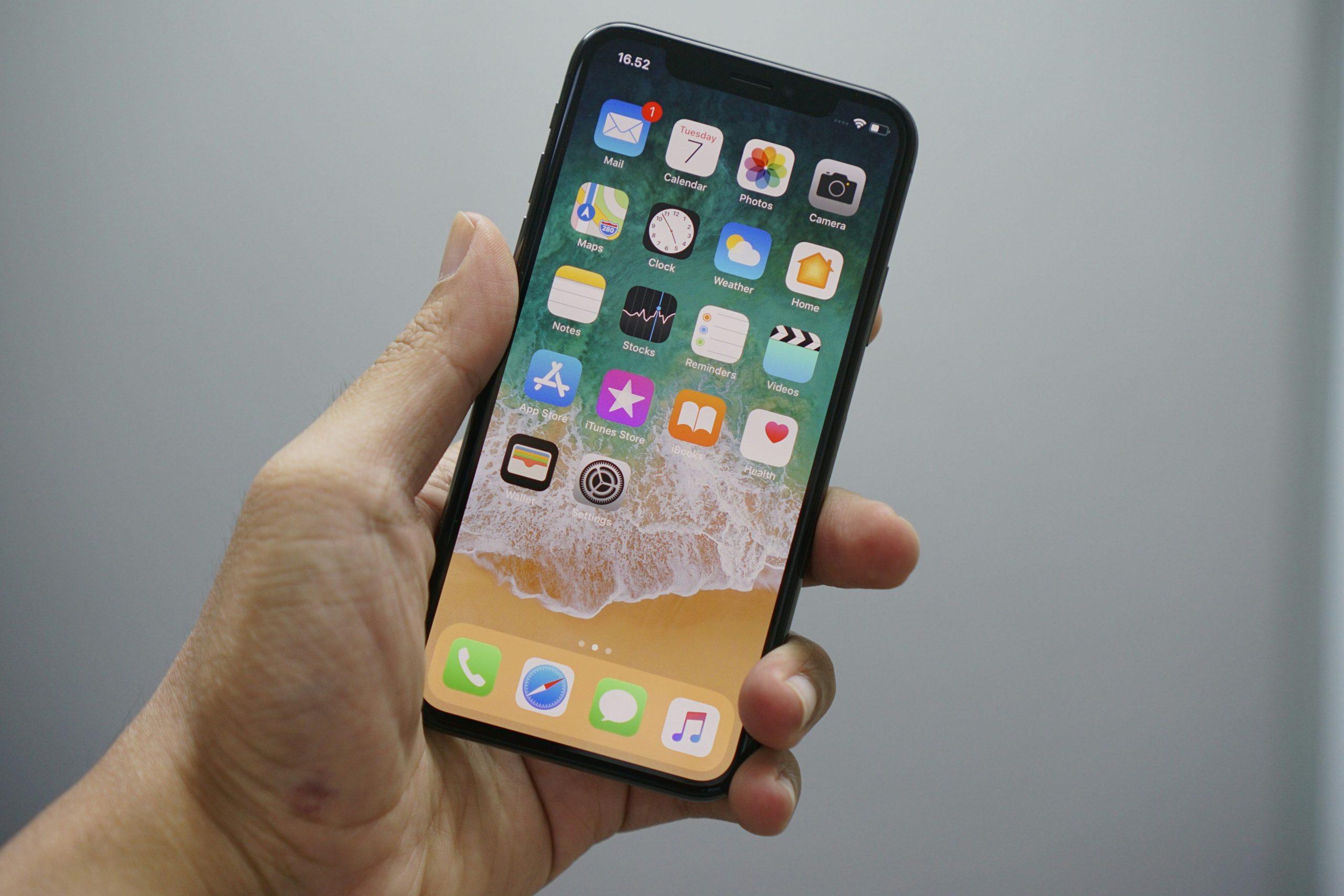
You can also give your device some time to cool down by pausing or ending your FaceTime call temporarily. Avoid using processor-intensive apps or activities that could further contribute to overheating.
3. Restart Your Device
A simple restart can sometimes resolve issues causing FaceTime calls to hang up unexpectedly. Restarting your device refreshes its system and may clear temporary glitches or conflicts affecting FaceTime performance.
Just power off your device, wait a few seconds, and then power it back on to see if the issue resolves. This quick and easy step may help restore smooth operation to your FaceTime calls.

4. Sign Out of FaceTime & Sign Back In
By signing out and signing back into FaceTime on your device, you can refresh the application’s settings and potentially resolve any underlying issues causing FaceTime calls to hang up unexpectedly. Here’s how you can do that:
↪ iPhone and iPad:
- Open the “Settings” app on your iPhone or iPad.
- Scroll down and tap on “FaceTime.”
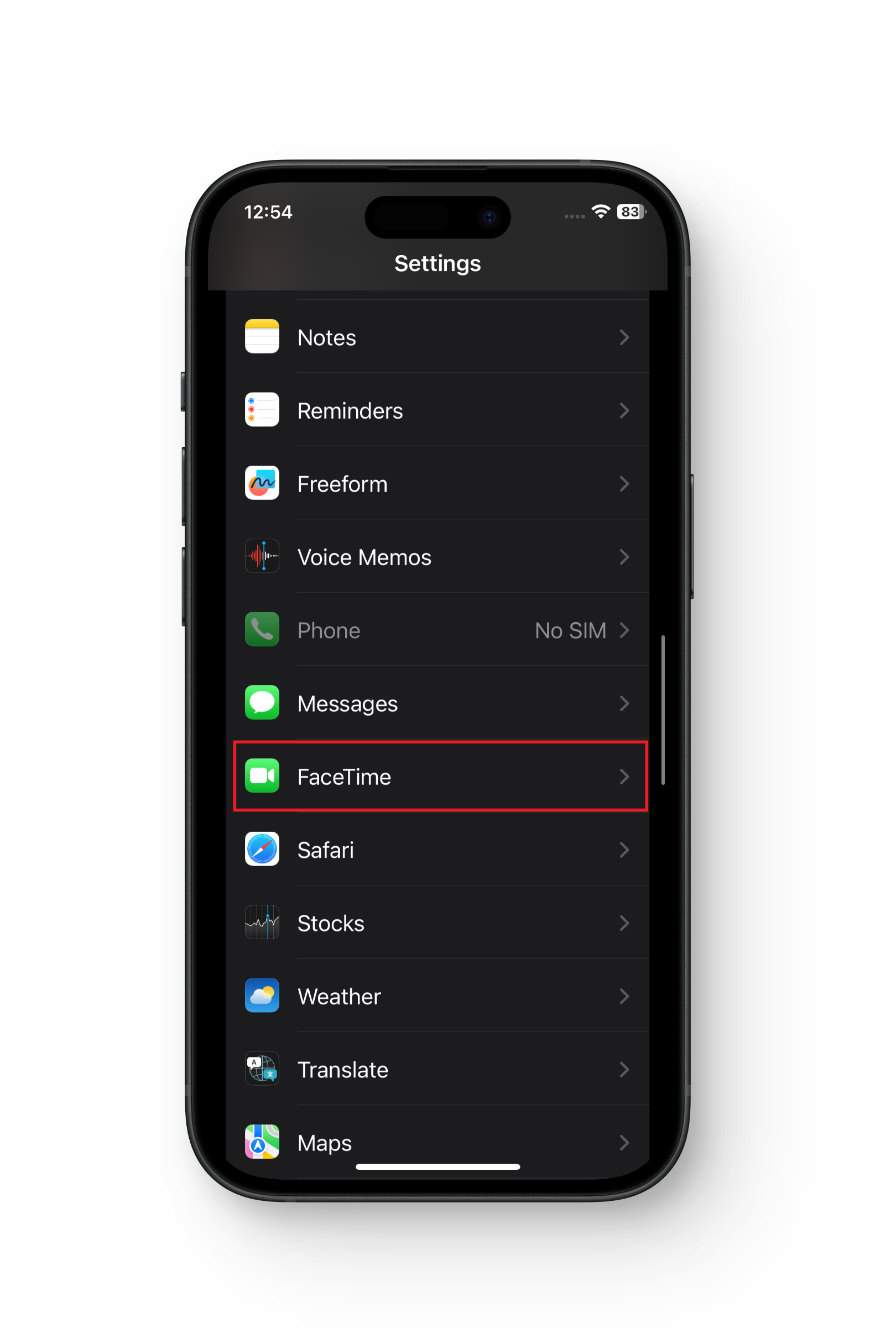
Select FaceTime - Tap on your Apple ID at the bottom of the screen.

- Select “Sign Out” from the pop-up menu.
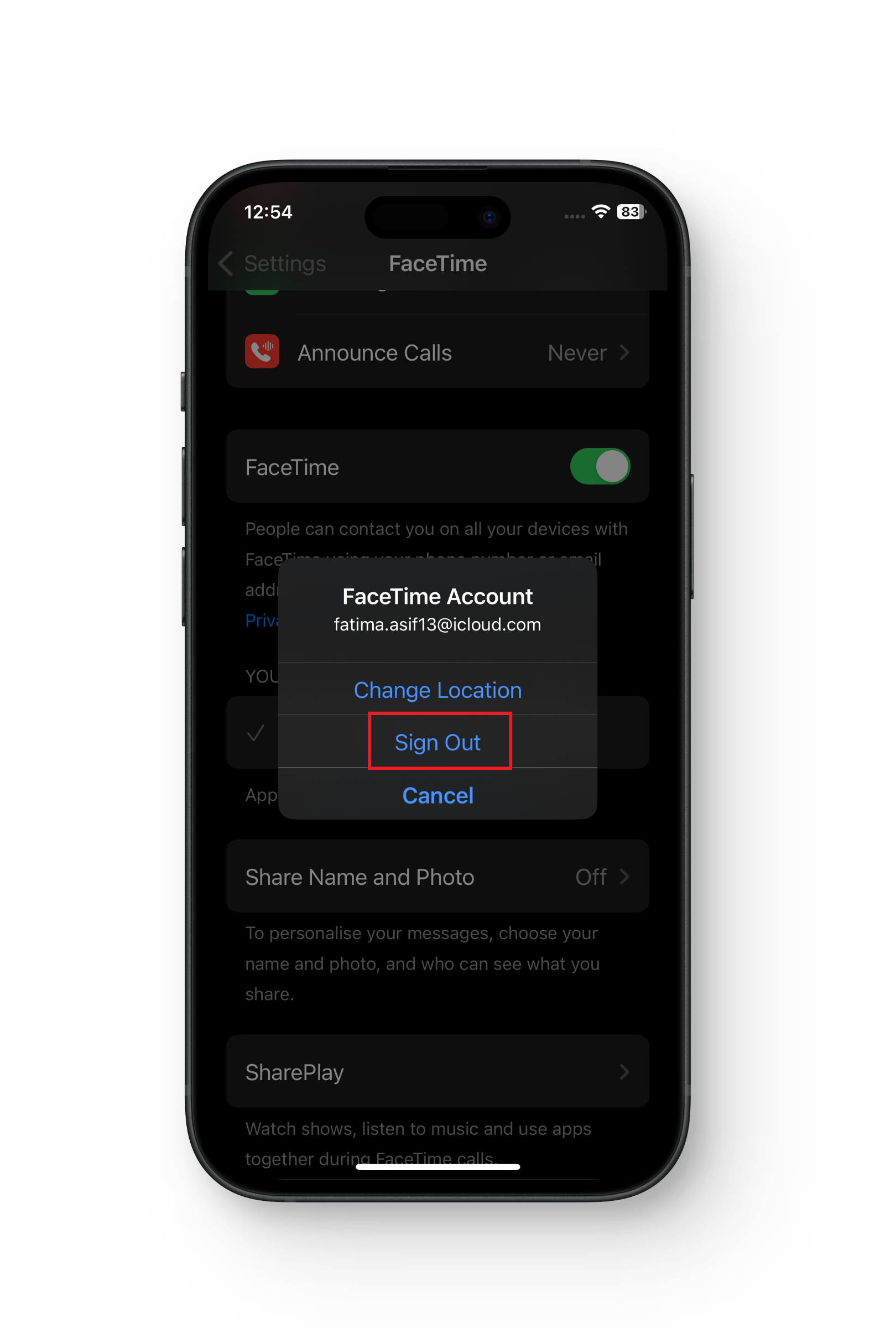
Tap on Sign Out - Now, tap on your Apple ID to sign back in.
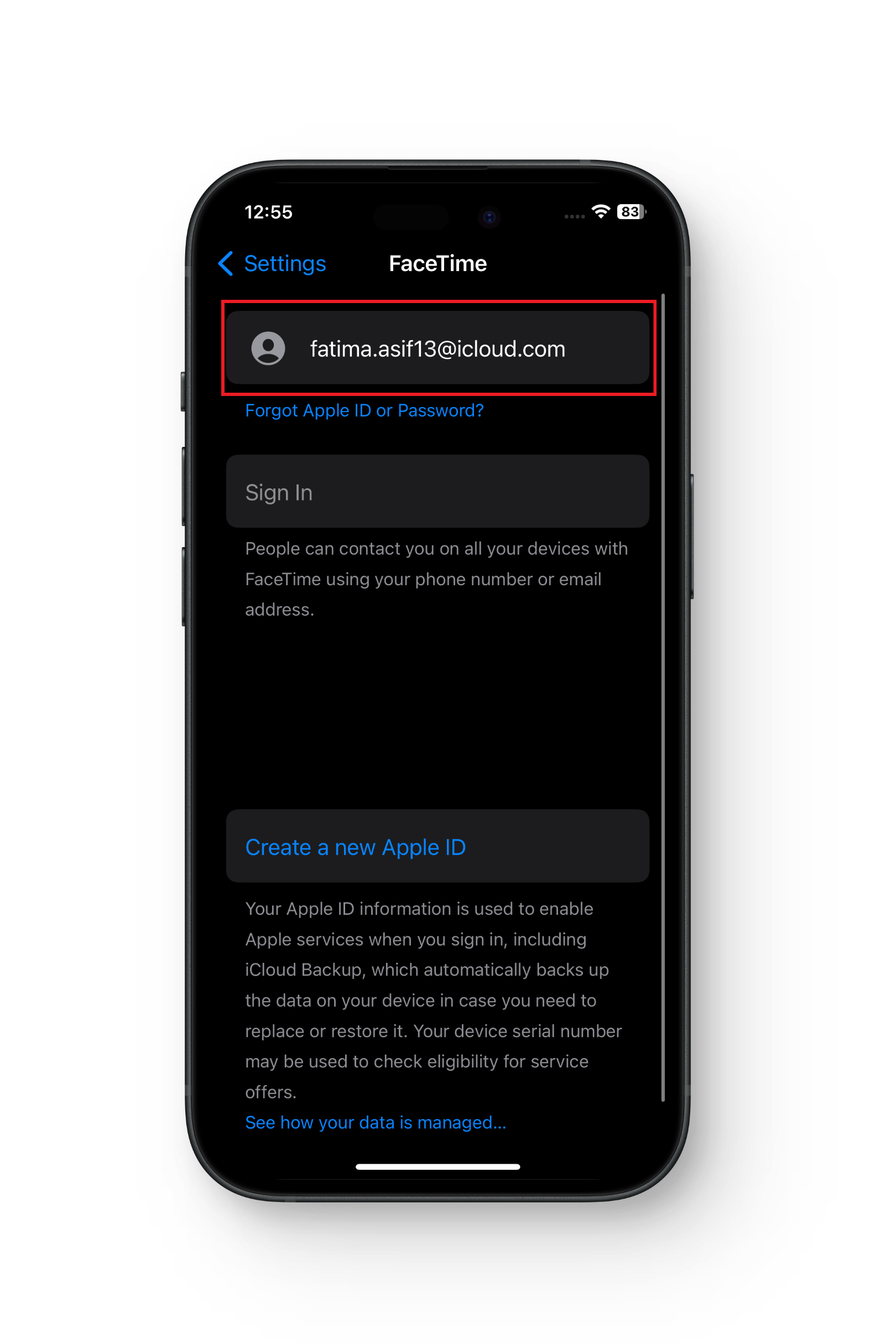
Tap on your Apple ID
↪ Mac:
- Navigate to the FaceTime menu at the top-left corner of your Mac’s screen.
- Select “Settings.“

Click on Settings - In the General window, look for the “Sign Out” option and select it.

Tap on Sign Out - Confirm by clicking on “Sign Out.”

Confirm the selection - Open the FaceTime application on your Mac and input your Apple ID and password into the provided field.
- Click on “Next” to complete the sign-in process.

Click on Next to complete sign in process
5. Switch off Airplane Mode
It’s best to turn off Airplane Mode on your iPhone, iPad, and Mac, allowing you to use FaceTime and other communication features without interruptions. Follow these steps to do so:
↪ iPhone and iPad:
- Unlock your iPhone or iPad and open the “Settings” app.
- Locate the “Airplane Mode” option.
- Tap the switch next to “Airplane Mode” to turn it off. The switch will change from green to white, indicating that Airplane Mode is disabled.
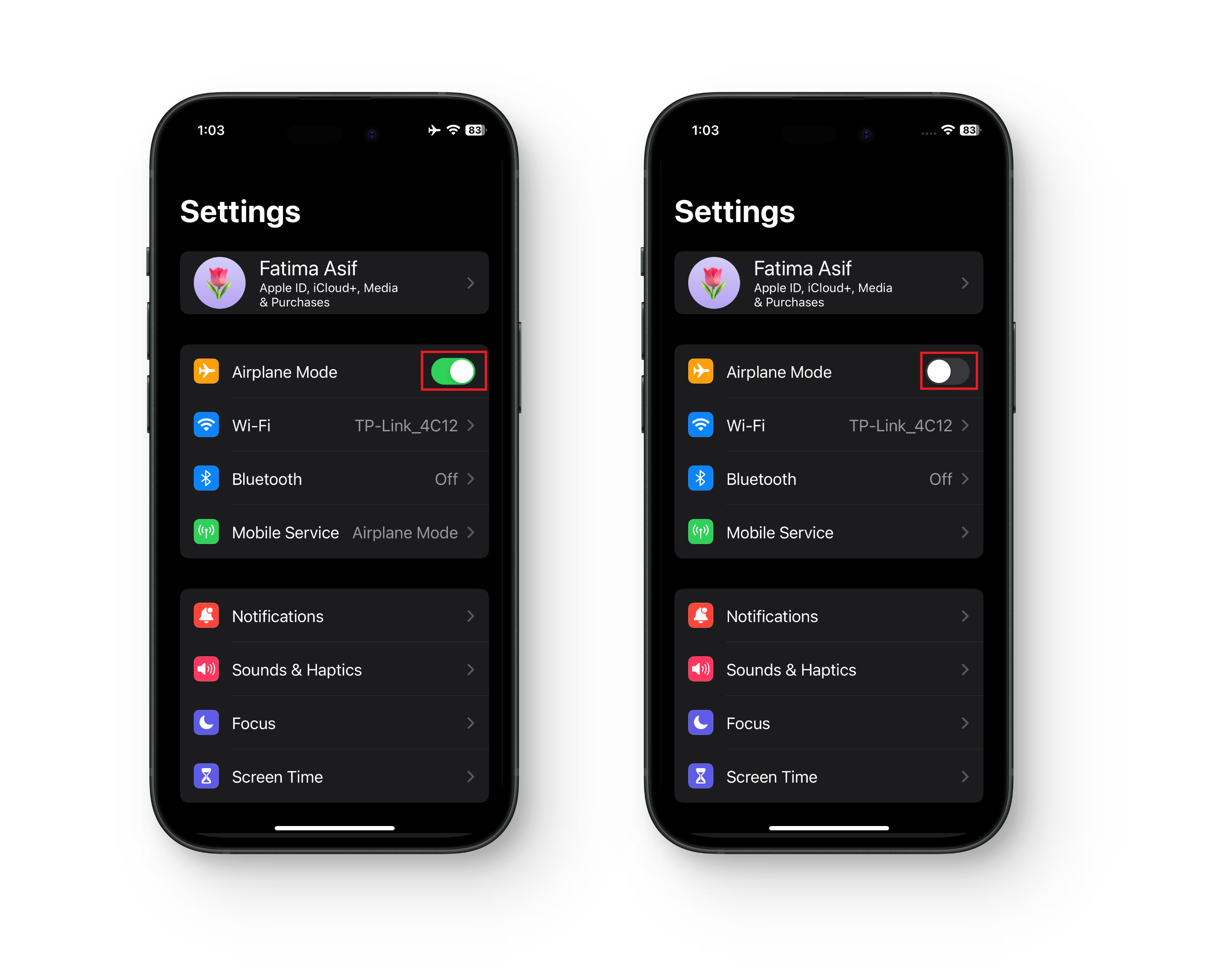
6. Update Your Apple Software
By keeping your Apple software up to date, you ensure that your devices have the latest features, improvements, and security patches, which can enhance your overall experience and help resolve any issues you may encounter with FaceTime. To update your iPhone, iPad, and Mac, follow these steps:
↪ iPhone and iPad:
- Open the “Settings” app on your iPhone or iPad.
- Scroll down and tap on “General.”

Tap General - Select “Software Update.”
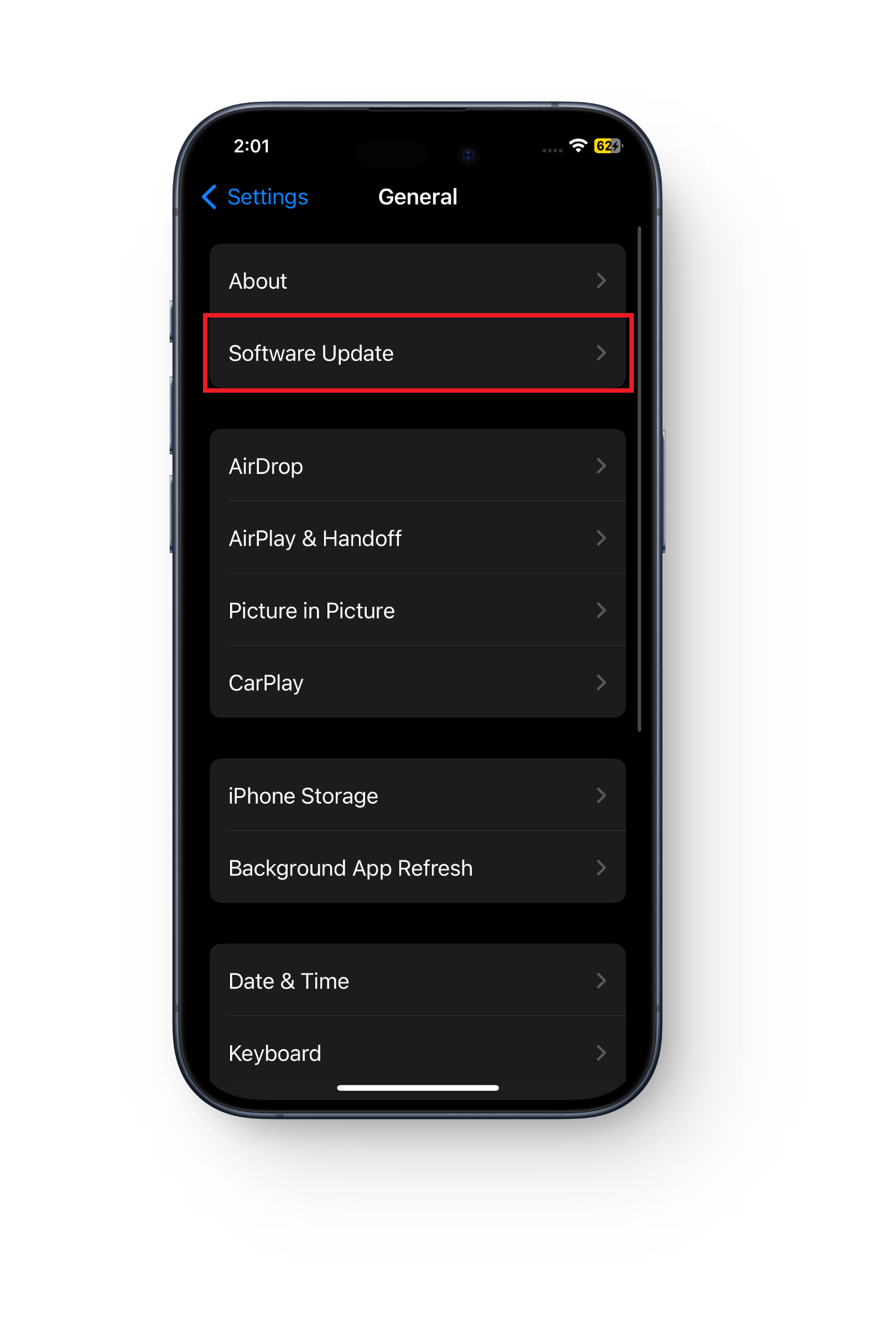
Tap on Software Update - If an update is available, tap “Download and Install.”

Download and install if an update is available - Follow the on-screen instructions to complete the update process. Your device may restart after the update is installed.
↪ Mac:
- Click on the Apple logo in the top-right corner of your Mac’s screen.
- Select “System Settings” from the dropdown menu.

Click on System Settings - Now, click on “Software Update.”

Select Software Update - Your Mac will check for available updates. If updates are found, click “Update Now” to download and install them.

If an update is available, download it
7. Disable VPN
Disabling your VPN may vary slightly depending on the VPN service and the device you’re using. However, the general steps provided should help you disable the VPN and allow you to use FaceTime without VPN interference. Follow these steps to do so:
↪ iPhone and iPad:
- Open the “Settings” app on your device.
- Tap on “VPN.”
- Toggle the switch next to the VPN configuration to disable it.
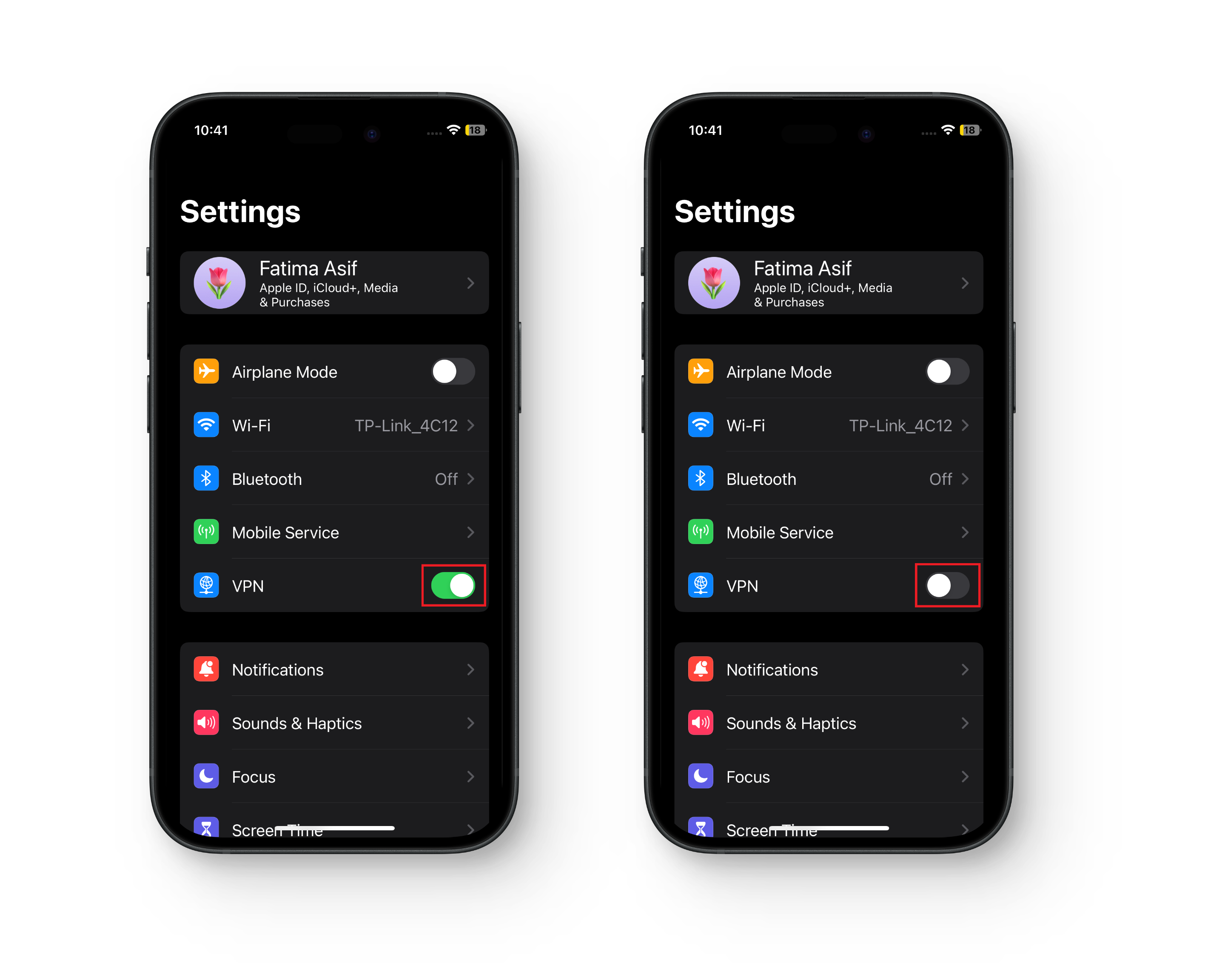
Toggle the VPN switch to disable it
↪ Mac:
- Go to the Apple menu and choose “System Settings.”
- Now, locate and click on “Network.”

Select Network - You should see your VPN connection listed in the right sidebar of the Network window. Select the VPN connection you want to disable. Look for the “Disconnect” button and click on it to disable the VPN connection.
8. Check Date & Time Settings
You might experience FaceTime hanging up due to an incorrect date and time. Here’s how you can set the accurate date and time according to your timezone:
↪ iPhone and iPad:
- Navigate to “Settings” > “General.”
- Scroll and tap on “Date & Time.”
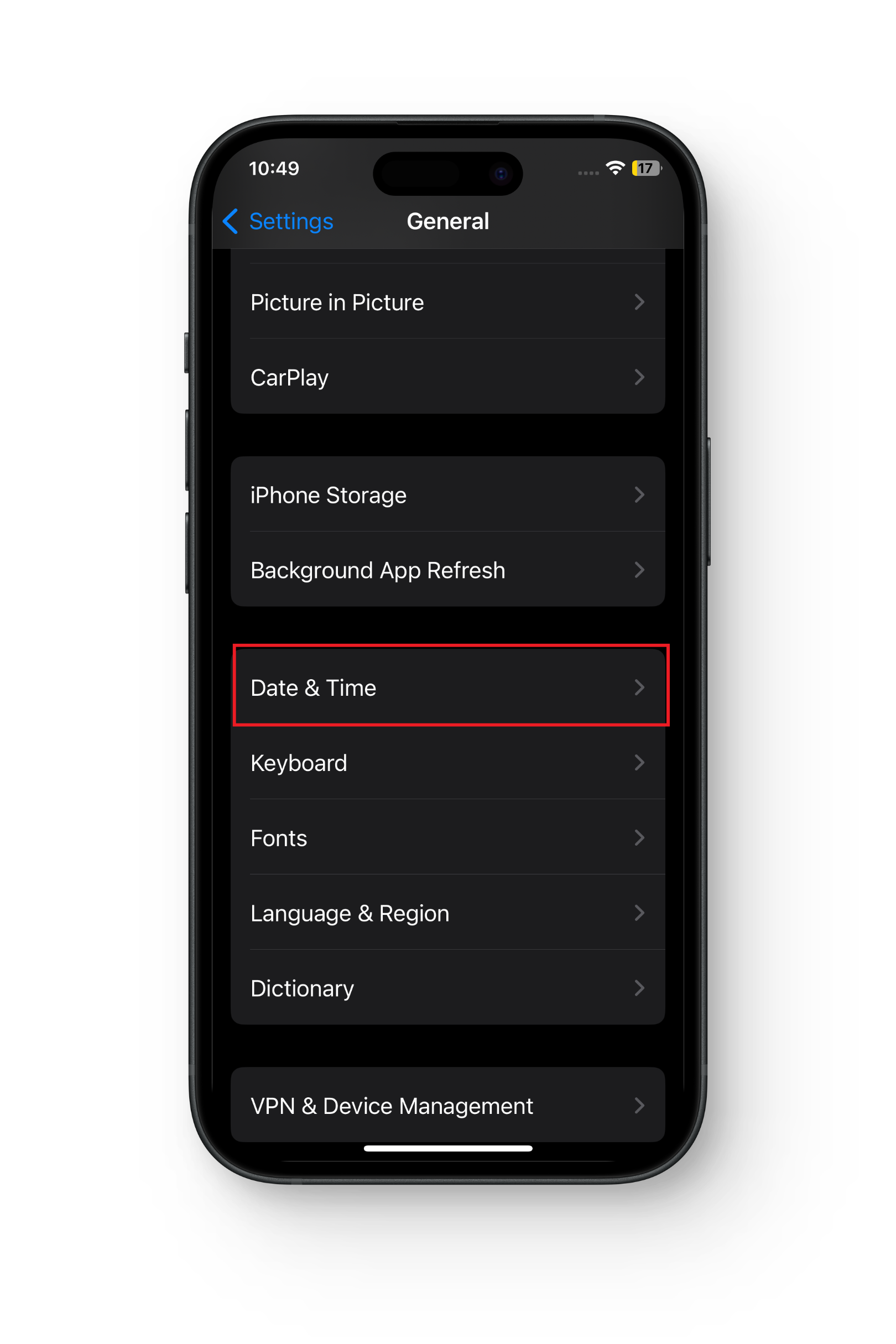
Select Date & Time - Toggle the switch next to “Set Automatically” to enable it. Your device will automatically set the date and time based on your current location and network.
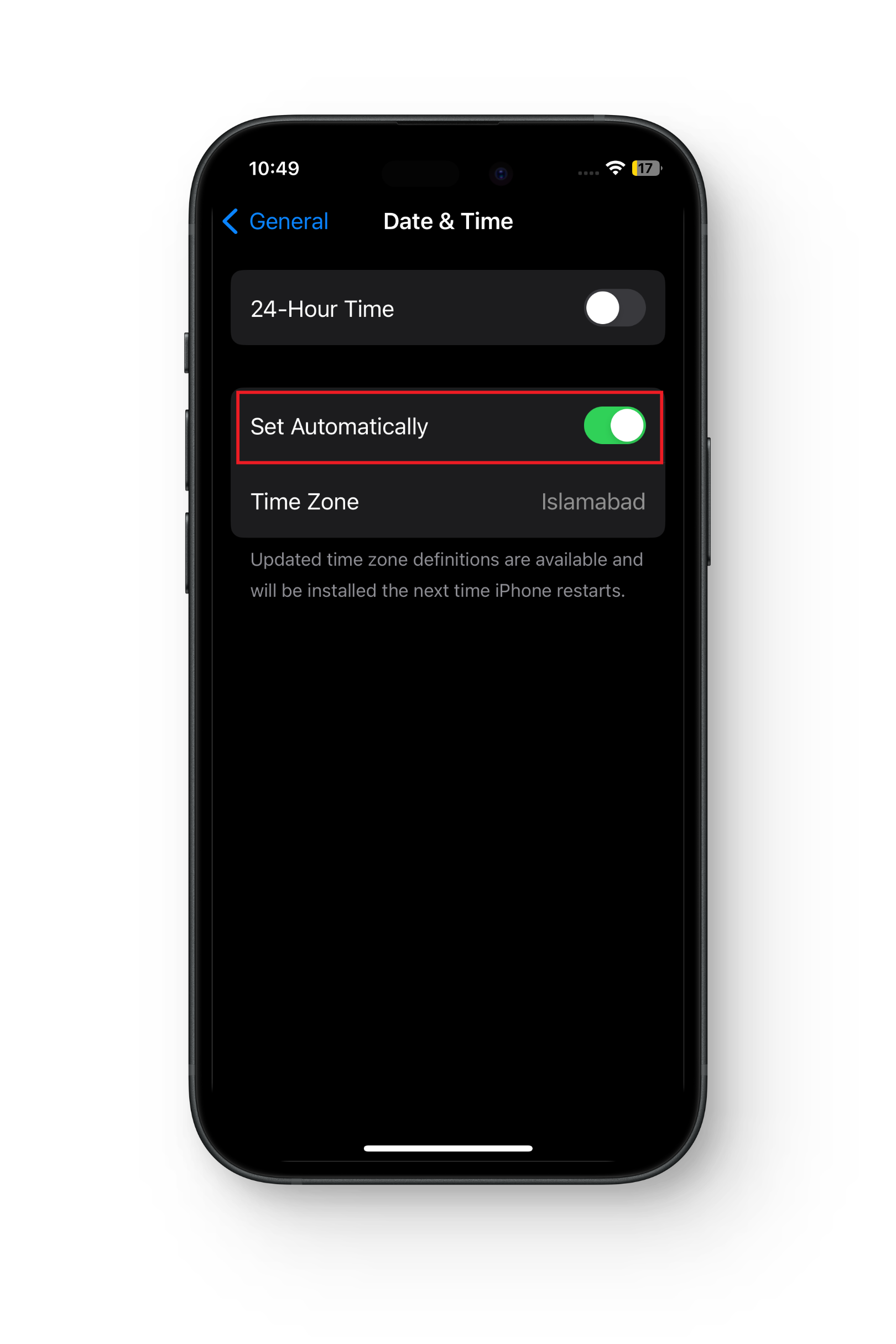
Enable the switch by tapping on the slider
↪ Mac:
- Click on the Apple menu and select “System Preferences.”
- Now, choose “Date & Time.“

Click on Date & Time - Look for the option labeled “Set time and date automatically” and ensure the slider is toggled.

Enable the automatic date and time
9. Check if Your Device is Compatible with Group FaceTime
If you are facing FaceTime issues while joining a group call, you need to make sure that your device is compatible with this feature. To use Group FaceTime video calls, you’ll need iOS 12.1.4 or later for iPhones or iPadOS on iPads. Another thing you would need is one of the following devices:
- iPhone 6s or later
- iPad Pro or later
- iPad Air 2 or later
- iPad mini 4 or later
- iPad (5th generation) or later
- iPod touch (7th generation)
Earlier iPhone, iPad, and iPod touch models that support iOS 12.1 are incompatible with Group FaceTime. Therefore, ensuring that your device meets these requirements to enjoy Group FaceTime calls is crucial.
10. Reset Your Device’s Network Settings
Resetting your device’s network settings can be a helpful troubleshooting step to resolve various connectivity issues, including problems with FaceTime. Here’s how you can reset your device’s network settings:
↪ iPhone and iPad:
- Go to “Settings” > “General” > “Transfer or Reset iPhone.”

Tap on Transfer or Reset iPhone - Scroll to the bottom and tap on “Reset.”
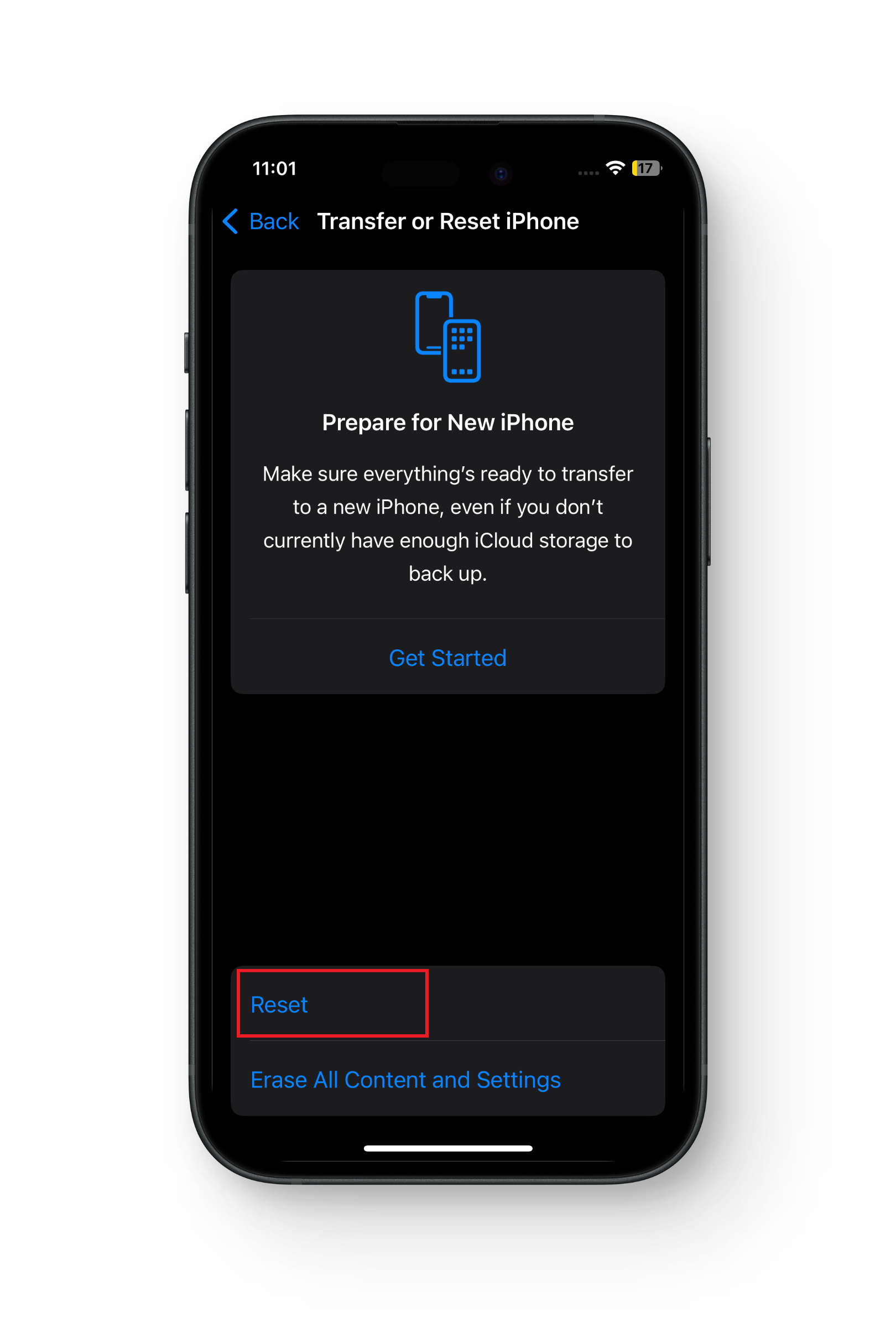
Select Reset - Select “Reset Network Settings.” Confirm if prompted. Your device will restart to apply the changes.
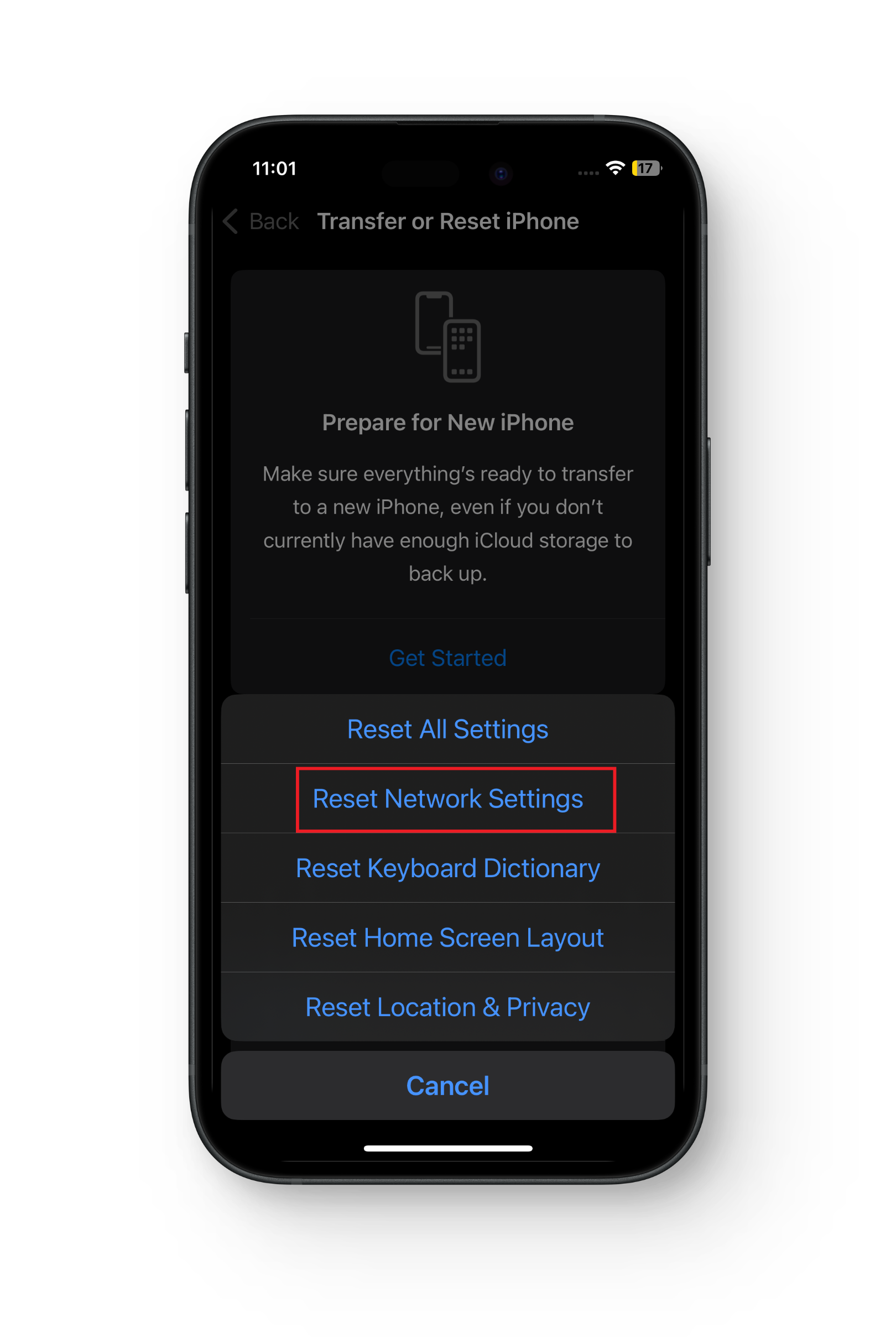
Now, tap on Reset Network Settings
↪ Mac:
- In the Apple Menu, go to “System Preferences” > “Network.”
- You’ll see a list of network connections on the left sidebar; click on the info button next to your Wi-Fi connection.
- Now, select “Forget This Network….”

Click on Forget This Network…
Contact Apple Support
If you’ve exhausted troubleshooting options and are still experiencing issues with FaceTime or any other aspect of your Apple device, reaching out to Apple Support is a viable option. Visit the Apple Support website (https://support.apple.com/) from any web browser. You can find articles, guides, and troubleshooting steps for various Apple products and services here.
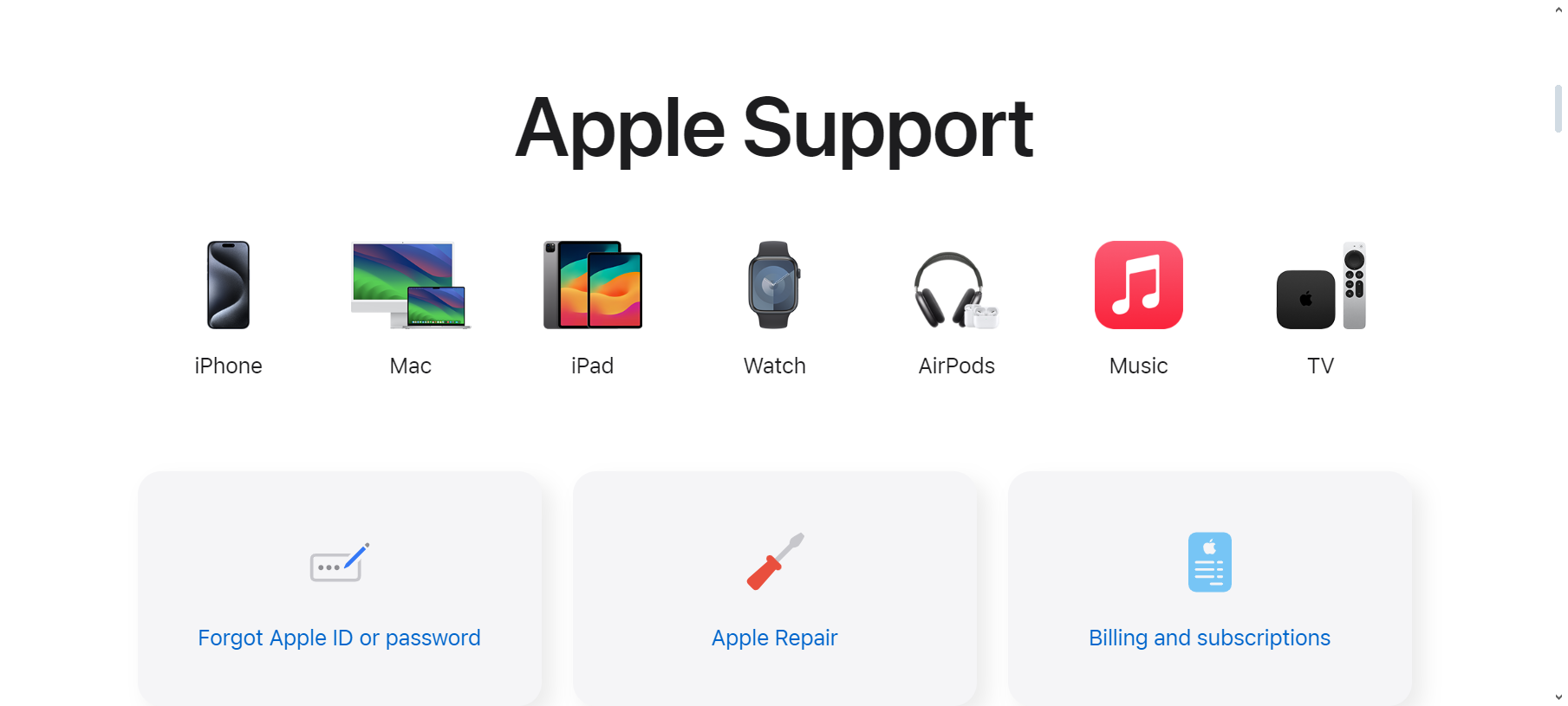
With Apple Support, you can access comprehensive assistance, ensuring that any issues with FaceTime or other Apple services are effectively addressed.
FAQs
No, FaceTime is exclusive to Apple devices and is not available on non-Apple platforms such as Android or Windows.
Group FaceTime calls support up to 32 participants simultaneously, making it ideal for virtual meetings, family gatherings, and group chats.
No, FaceTime should not be used for emergency calls. For emergencies, dial the appropriate emergency services number in your country.
FaceTime calls are encrypted end-to-end, meaning only the sender and receiver can access the content of the call. This helps ensure privacy and security during FaceTime conversations.
 Reviewed by
Reviewed by 




